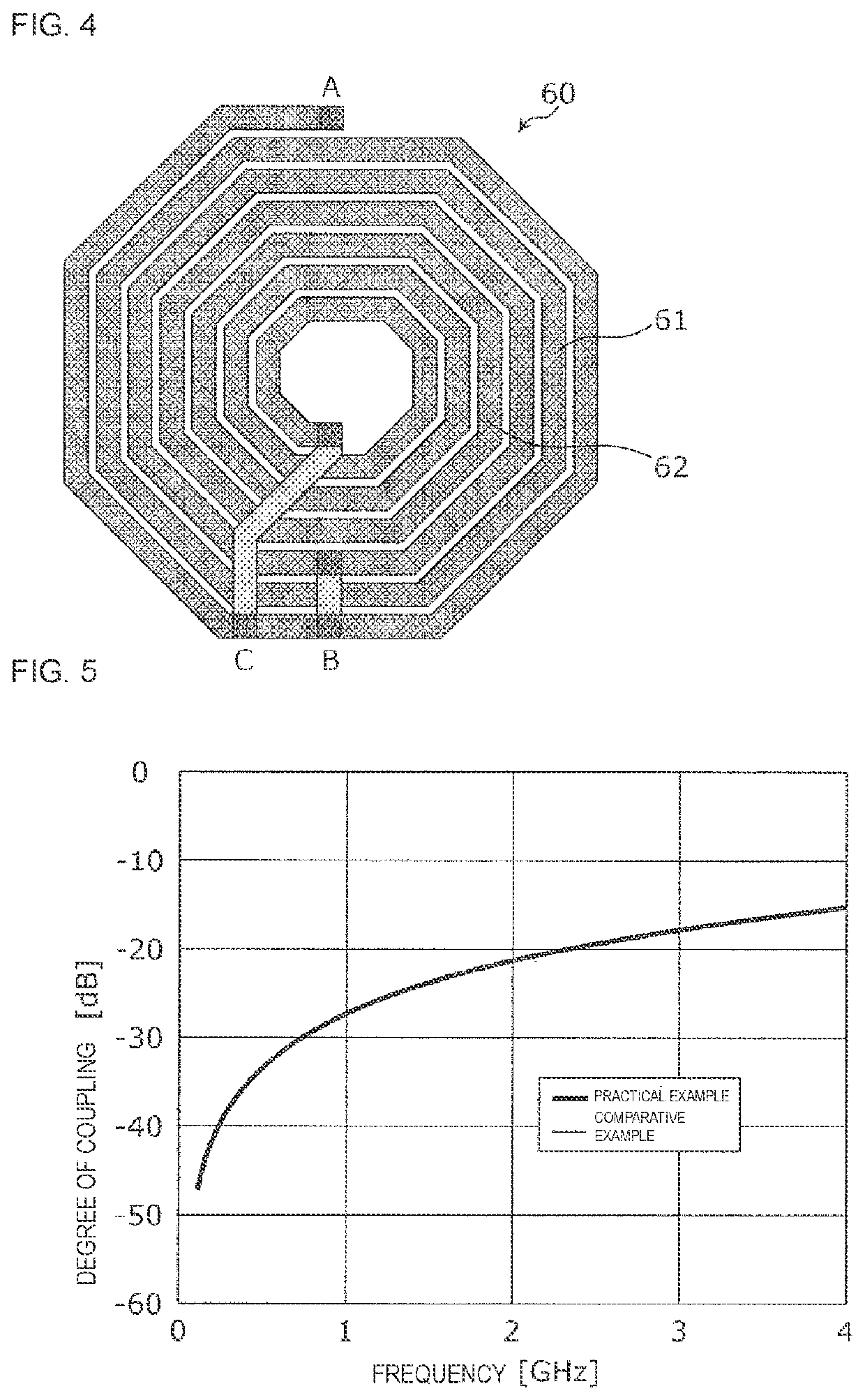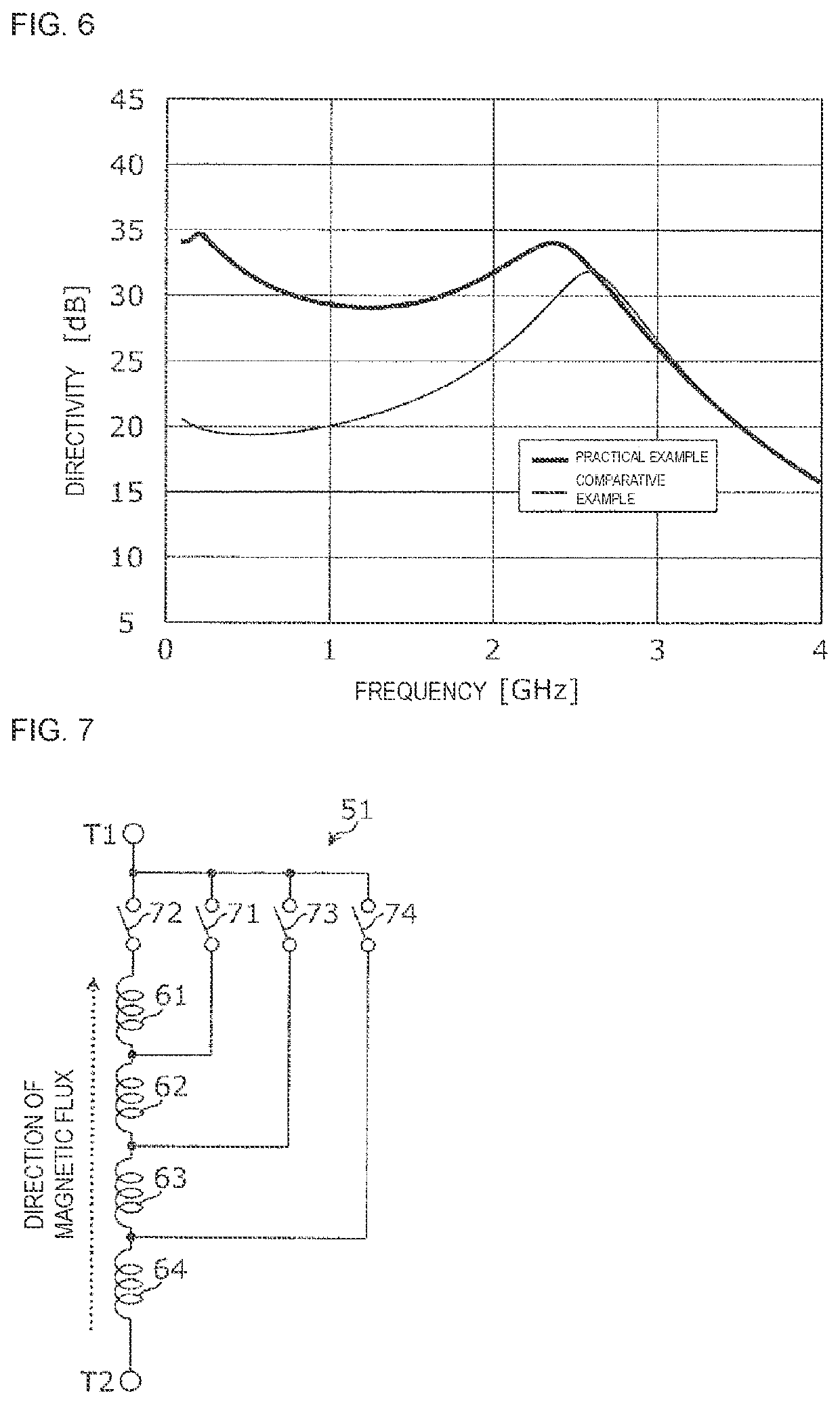Directional coupler
a directional coupler and directional coupler technology, applied in the direction of coupling devices, waveguide type devices, basic electric elements, etc., can solve the problems of degrading the characteristics of the coupler, difficult to space the inductor and main and secondary lines apart from each other in a miniaturized coupler, etc., to facilitate the degradation of the characteristics of the directional coupler, hinder unnecessary coupling, and increase the flexibility of arranging the inductors
- Summary
- Abstract
- Description
- Claims
- Application Information
AI Technical Summary
Benefits of technology
Problems solved by technology
Method used
Image
Examples
first embodiment
[0028]A directional coupler according to a first embodiment will be described by using as an example a high frequency coupler including a main line, a secondary line, and a variable terminator coupled to an end portion of the secondary line and configured to terminate the end portion of the secondary line with an adjustable impedance.
[0029]FIG. 1 is a circuit diagram illustrating an example of a configuration of the directional coupler according to the first embodiment.
[0030]As illustrated in FIG. 1, a directional coupler 100 is constituted by a main line 10, a secondary line 20, switches 31 and 32, a variable terminator 40, and a controller 91.
[0031]The main line 10 and the secondary line 20 are electromagnetically coupled to each other. As a result, when an end portion 22 of the secondary line 20 is terminated, a portion of a main signal transferred through the main line 10 from an end portion 11 to an end portion 12 is outputted as a detection signal from an end portion 21 of the...
second embodiment
[0107]A directional coupler according to a second embodiment will be described by using as an example a directional coupler formed as a module.
[0108]FIG. 11 is a circuit diagram illustrating an example of a configuration of the directional coupler according to the second embodiment.
[0109]As illustrated in FIG. 11, a directional coupler 101 differs from the directional coupler 100 in FIG. 1 in adding a variable matching circuit 80 and adding to a controller 92 a function of controlling the variable matching circuit 80. The variable matching circuit 80 is formed by a variable inductor 81 and a variable capacitor 82. The variable matching circuit 80 is coupled between an end portion for signal output of the secondary line 20 and the coupled port CPL. In FIG. 11, the main line 10 and the secondary line 20 of the directional coupler 101 are illustrated as an LC equivalent circuit.
[0110]FIG. 12 is a circuit diagram illustrating an example of a configuration of the variable matching circui...
PUM
 Login to View More
Login to View More Abstract
Description
Claims
Application Information
 Login to View More
Login to View More - R&D
- Intellectual Property
- Life Sciences
- Materials
- Tech Scout
- Unparalleled Data Quality
- Higher Quality Content
- 60% Fewer Hallucinations
Browse by: Latest US Patents, China's latest patents, Technical Efficacy Thesaurus, Application Domain, Technology Topic, Popular Technical Reports.
© 2025 PatSnap. All rights reserved.Legal|Privacy policy|Modern Slavery Act Transparency Statement|Sitemap|About US| Contact US: help@patsnap.com



